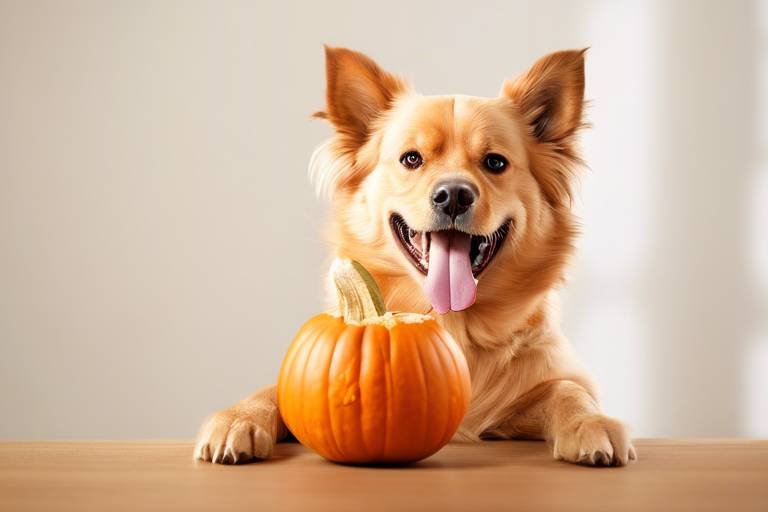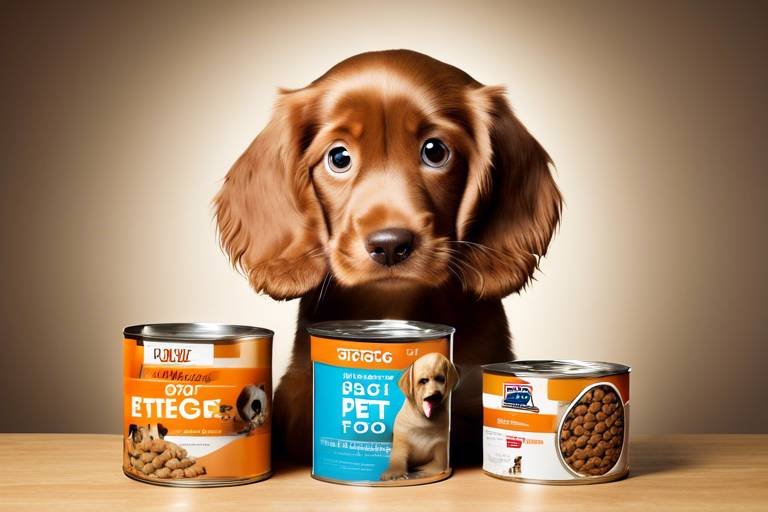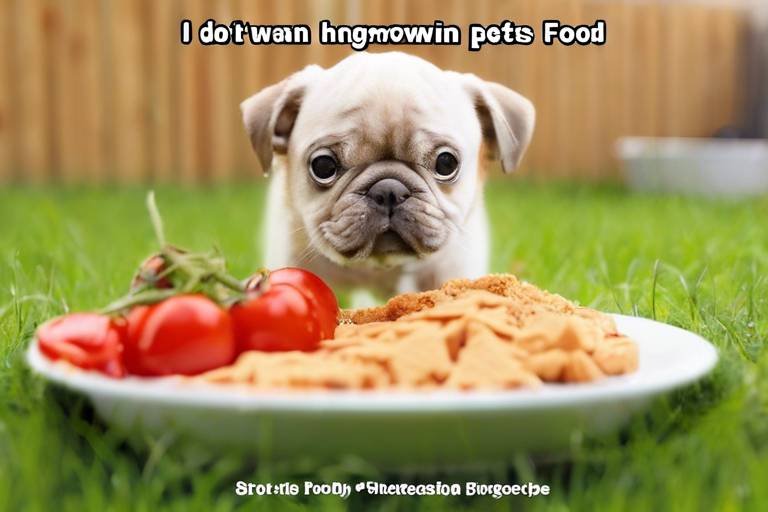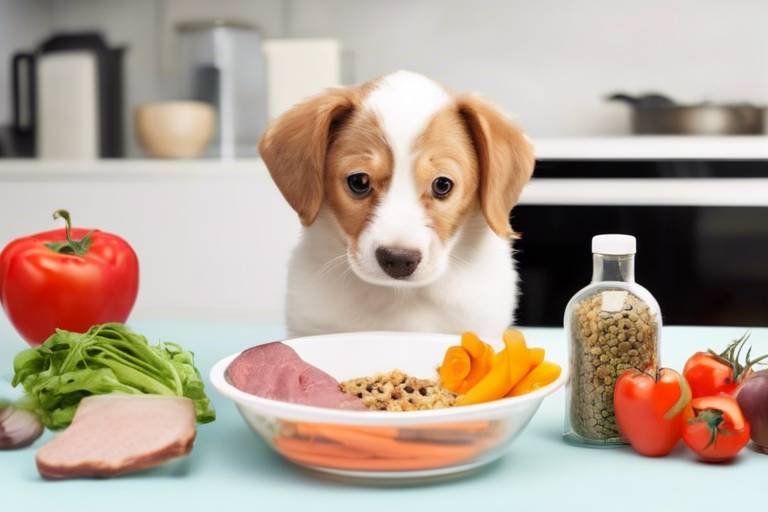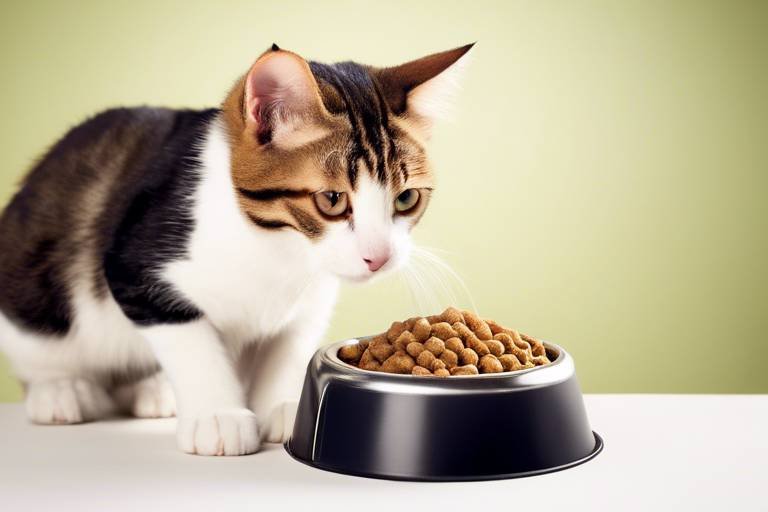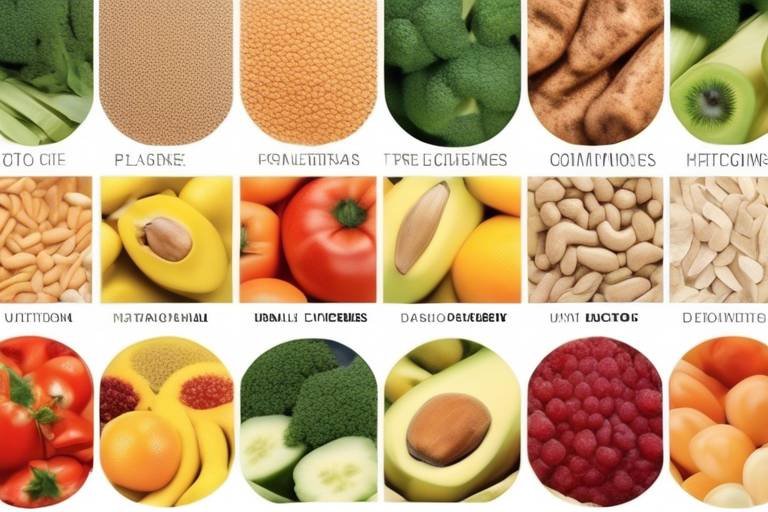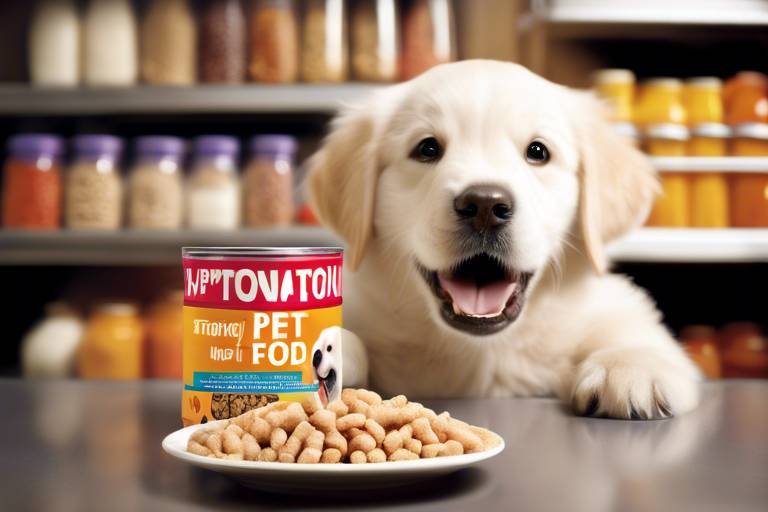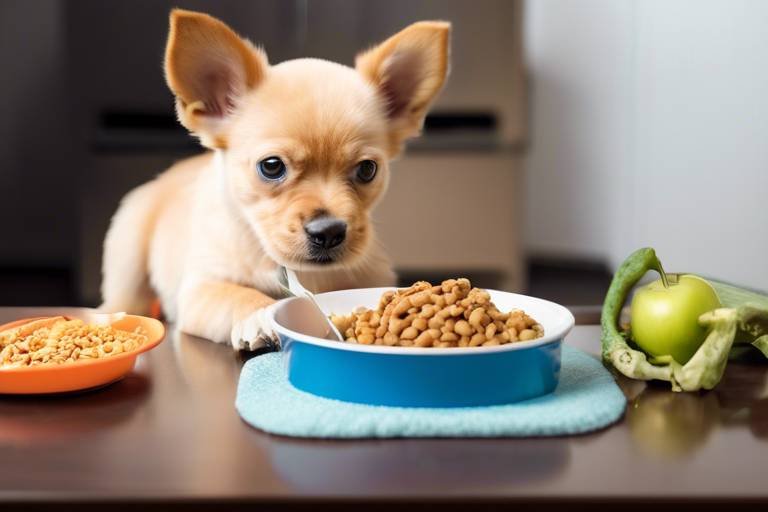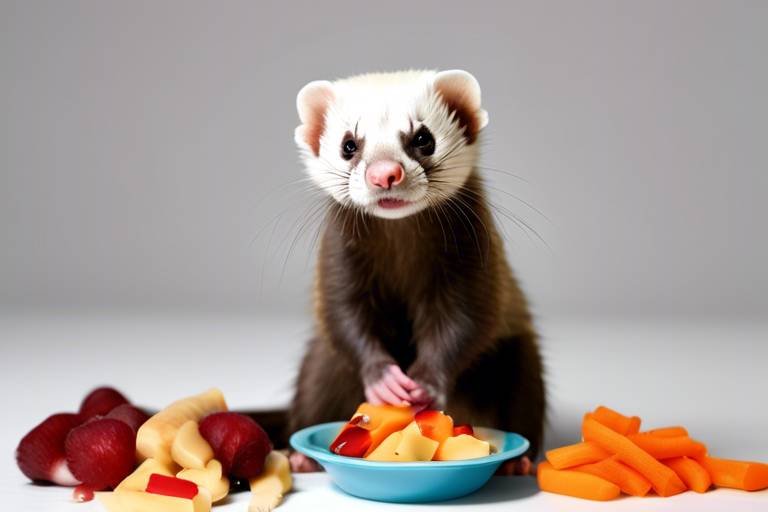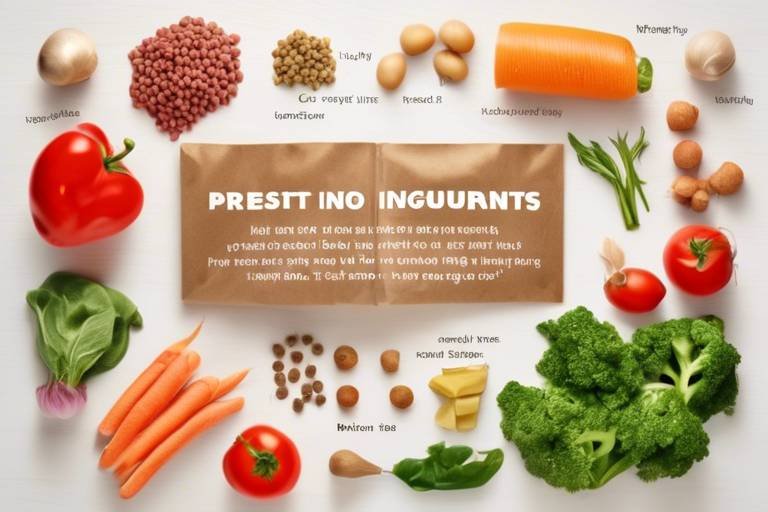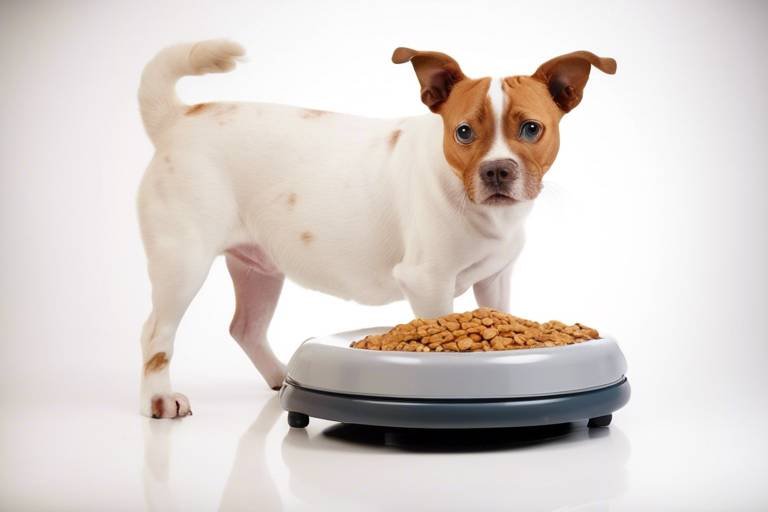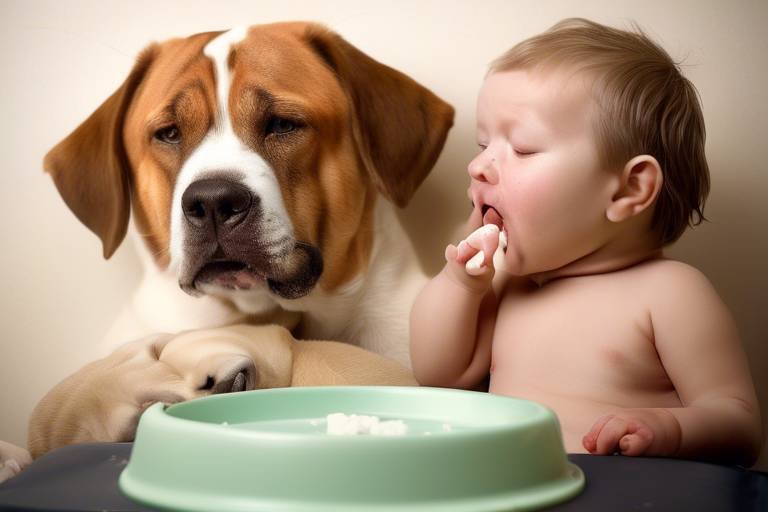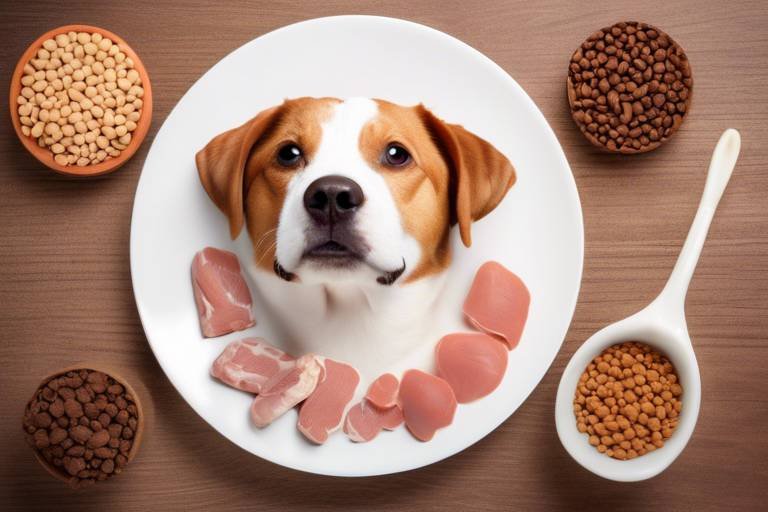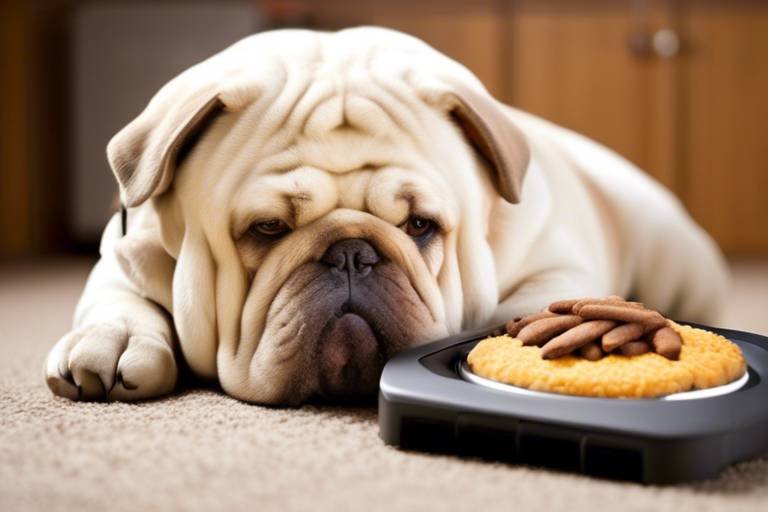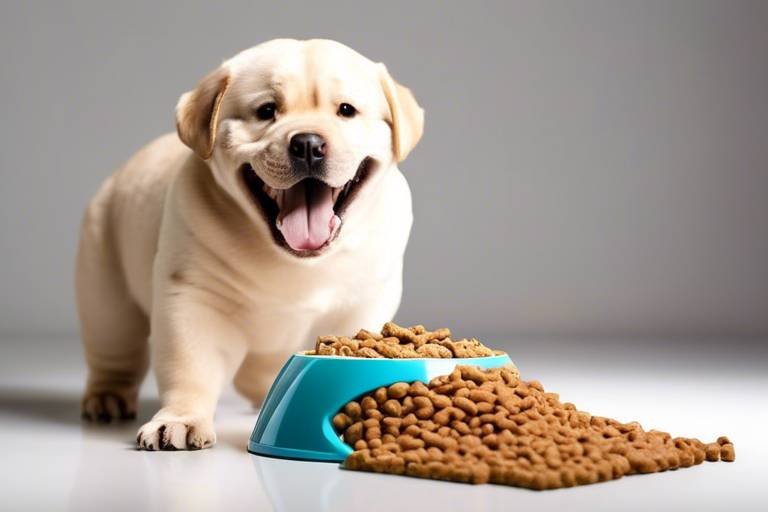The Benefits of Using Pumpkin in Pet Meals
Have you ever wondered how you can enhance your pet's diet while also providing them with a delicious treat? Well, look no further! Incorporating pumpkin into your pet's meals is not just a trendy idea; it's a beneficial choice that can lead to a healthier, happier furry friend. Pumpkin is packed with essential nutrients that can support your pet's overall well-being. From improving digestive health to promoting a shiny coat, the benefits are numerous and significant. Let's dive into why pumpkin should be a staple in your pet's diet.
Pumpkin is a powerhouse of nutrition, offering a plethora of vitamins and minerals that are vital for your pet's health. It is particularly rich in:
- Fiber: Helps with digestion and keeps your pet feeling full.
- Vitamin A: Essential for vision and immune function.
- Antioxidants: Protects cells from damage and supports overall health.
These nutrients work together to ensure your pet not only feels good but also thrives. Imagine giving your pet a natural source of nutrition that also tastes great—it's a win-win!
One of the standout features of pumpkin is its high fiber content. Fiber is crucial for maintaining healthy digestion, and it can help regulate bowel movements, making it easier for your pet to go. If your furry friend struggles with gastrointestinal issues, pumpkin can be a game-changer. It acts like a gentle broom for the digestive tract, sweeping away any discomfort. Plus, it can help alleviate both constipation and diarrhea, making it a versatile ingredient for pet owners.
Are you worried about your pet's weight? Incorporating pumpkin into their diet can be an effective strategy for weight management. Since pumpkin is low in calories yet high in fiber, it promotes a feeling of fullness without adding excess calories to their meals. This means your pet can enjoy a satisfying meal while you keep their weight in check. It's like finding a delicious snack that doesn't ruin your diet!
When adding pumpkin to your pet's meals, understanding portion control is crucial. Too much of a good thing can lead to overfeeding, which defeats the purpose of healthy eating. A general guideline is to start with a small amount—about 1 to 2 tablespoons for small pets and up to 1/4 cup for larger dogs. Monitor how your pet responds and adjust accordingly. Remember, moderation is key!
If you're looking for a healthy alternative to traditional pet treats, pumpkin is your answer. Not only is it tasty, but it also supports your pet's health without unnecessary additives or preservatives. You can even bake homemade pumpkin treats that your pet will love. It's a fun way to bond with your furry friend while ensuring they eat healthily.
Did you know that the vitamins and fatty acids found in pumpkin contribute to healthier skin and a shiny coat? Regularly incorporating pumpkin into your pet's diet can help prevent common skin issues, such as dryness and irritation. Think of pumpkin as a natural moisturizer for your pet's skin. A shiny coat is just a bonus!
For pets with food sensitivities, pumpkin is often a well-tolerated ingredient. It can be a safe option for pets with allergies or intolerances to common proteins or grains. By introducing pumpkin into their diet, you provide a nutritious alternative that can help maintain their health without triggering any adverse reactions.
Creating homemade meals or treats with pumpkin can be an enjoyable experience for both you and your pet. You can whip up simple recipes like pumpkin puree mixed with your pet's regular food or bake pumpkin-flavored biscuits. This way, you can ensure your pet enjoys the benefits of this nutritious food while avoiding commercial additives. Plus, your pet will love the extra effort you put into their meals!
Before making significant changes to your pet's diet, it's essential to consult with your veterinarian. They can provide personalized advice based on your pet's specific health needs and ensure that pumpkin is a suitable addition to their meals. After all, your vet knows your pet best!
Q: Can all pets eat pumpkin?
A: While most pets can enjoy pumpkin, it's always best to consult with your veterinarian, especially if your pet has specific dietary restrictions.
Q: How should I prepare pumpkin for my pet?
A: You can use canned pumpkin (make sure it's plain and unsweetened) or cook fresh pumpkin by steaming or baking it. Avoid using pumpkin pie filling, as it contains added sugars and spices that are harmful to pets.
Q: How often can I give my pet pumpkin?
A: Pumpkin can be given a few times a week, but moderation is key. Start with small amounts and adjust based on your pet's tolerance and nutritional needs.

Nutritional Value of Pumpkin
Pumpkin is not just a delightful autumn decoration; it's a powerhouse of nutrition that can significantly enhance your pet's diet. Packed with essential vitamins and minerals, pumpkin provides a variety of health benefits that can contribute to your furry friend's overall well-being. For instance, did you know that pumpkin is particularly rich in fiber? This nutrient plays a crucial role in maintaining digestive health, making it a fantastic addition to your pet's meals.
Moreover, pumpkin is loaded with vitamin A, which is vital for maintaining healthy vision, skin, and immune function. Just imagine your pet strutting around with a shiny coat and sparkling eyes, all thanks to this vibrant orange food! Additionally, pumpkin contains antioxidants that combat free radicals in the body, promoting cellular health and potentially reducing the risk of chronic diseases.
Here's a quick overview of the key nutritional components of pumpkin:
| Nutrient | Benefit |
|---|---|
| Fiber | Aids digestion and regulates bowel movements |
| Vitamin A | Supports vision, skin health, and immune function |
| Antioxidants | Protects cells from damage and supports overall health |
| Potassium | Regulates fluid balance and supports muscle function |
It's fascinating to think about how such a simple ingredient can pack so much nutritional punch. Not only does it provide essential nutrients, but it also offers a low-calorie option for pets who need to watch their weight. By incorporating pumpkin into their meals, you can help your pet feel full and satisfied without the extra calories. So, the next time you're in the kitchen, consider reaching for some pumpkin puree instead of those high-calorie treats!
In summary, the nutritional value of pumpkin is immense, making it a fantastic choice for enhancing your pet's diet. With its rich content of fiber, vitamins, and antioxidants, pumpkin can help maintain your pet's health and vitality. So why not give it a try? Your pet will thank you with wagging tails and happy purrs!
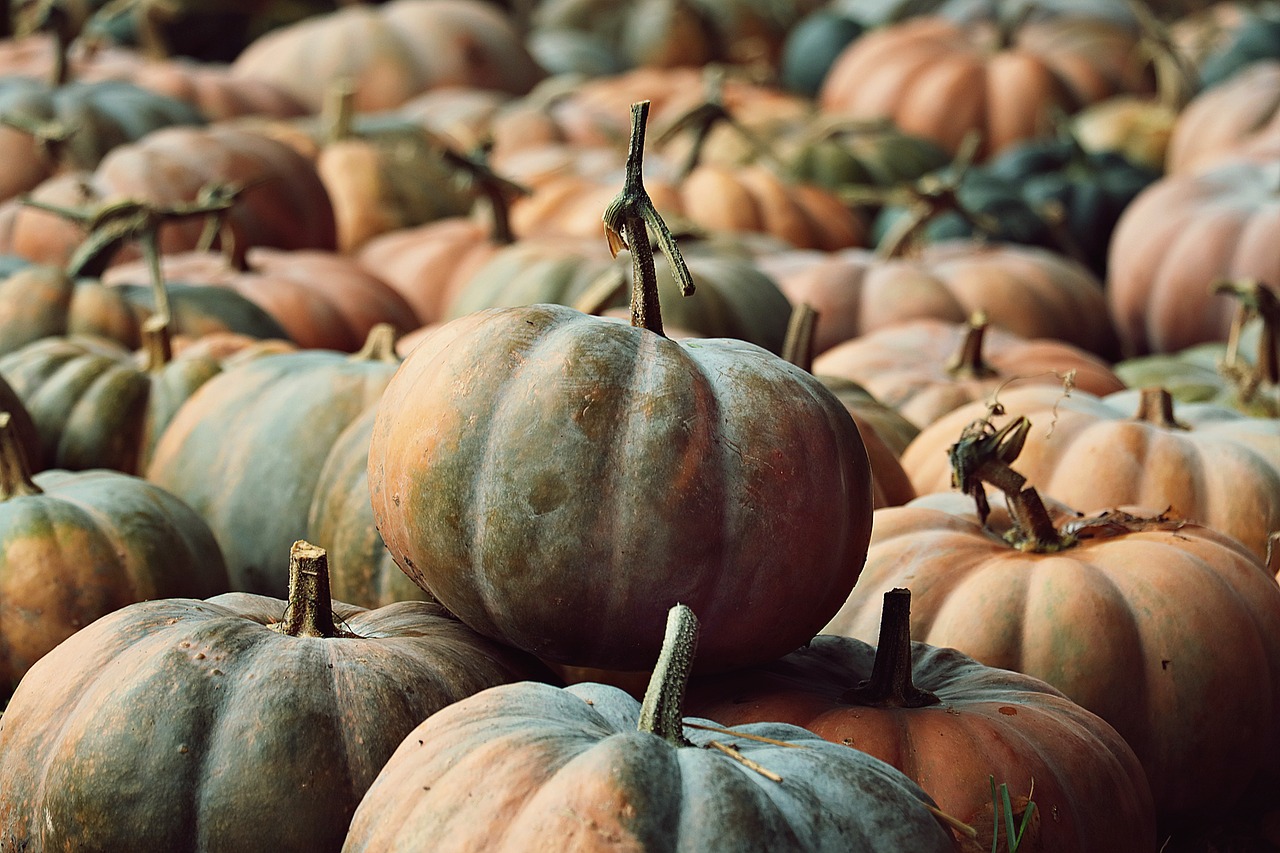
Digestive Health Benefits
When it comes to our furry friends, digestive health is a cornerstone of their overall well-being. Have you ever noticed how a simple change in diet can affect your pet's energy levels and mood? Well, incorporating pumpkin into your pet's meals can be a game-changer! The high fiber content in pumpkin plays a crucial role in promoting a healthy digestive system. Fiber is like a superhero for your pet's gut, helping to regulate bowel movements and prevent constipation. Imagine your pet's digestive system as a busy highway; fiber acts as the traffic controller, ensuring everything flows smoothly.
Not only does pumpkin help with regularity, but it also serves as a natural remedy for gastrointestinal issues. If your pet occasionally experiences upset stomachs or diarrhea, adding pumpkin to their diet can help soothe their digestive tract. The soluble fiber found in pumpkin absorbs excess water, which can help firm up loose stools. It's like giving your pet's tummy a gentle hug, providing comfort and support when they need it most.
But wait, there's more! Pumpkin is also low in calories, making it a fantastic option for pets who might be struggling with their weight. By adding pumpkin to their meals, you can bulk up their food without adding excessive calories. This not only promotes a feeling of fullness but also helps your pet maintain a healthy weight. It's like having your cake and eating it too—your pet gets to enjoy a hearty meal while you feel good about their health!
To make the most of pumpkin's digestive benefits, consider the following tips:
- Start with small amounts: Introduce pumpkin gradually to avoid any digestive upset.
- Choose plain, canned pumpkin: Ensure it's 100% pure pumpkin with no added sugars or spices.
- Mix it into their regular food: This can help your pet adjust to the new flavor and texture.
In summary, the digestive health benefits of pumpkin are truly remarkable. From regulating bowel movements to soothing upset stomachs, this humble gourd can do wonders for your pet's gut health. So, why not give it a try? Your pet's tummy will thank you!
Q: Can all pets eat pumpkin?
A: Most pets can safely enjoy pumpkin, but it's always best to consult your veterinarian, especially if your pet has specific dietary restrictions.
Q: How much pumpkin should I give my pet?
A: A small spoonful for dogs and cats is usually sufficient. Start with a small amount and observe how your pet reacts.
Q: Is canned pumpkin better than fresh pumpkin?
A: Canned pumpkin is convenient and often more consistent in quality. Just make sure it’s pure pumpkin without additives.
Q: Can pumpkin help with my pet's weight loss?
A: Yes! Pumpkin is low in calories and high in fiber, making it a great addition to help your pet feel full without adding too many calories.
Managing Weight
When it comes to our furry friends, maintaining a healthy weight is crucial for their overall well-being. Many pet owners struggle with the challenge of keeping their pets at an ideal weight, especially with the abundance of high-calorie treats available on the market. That's where pumpkin comes into play! This vibrant orange vegetable is not only delicious but also a fantastic ally in managing your pet's weight. Low in calories yet high in fiber, pumpkin can help your pet feel fuller for longer without the added calories that can lead to weight gain.
Imagine this: you’re at a buffet, and there’s a mountain of food in front of you. You’d want to fill your plate, right? But what if you had a magic food that filled you up without adding to your waistline? That’s exactly what pumpkin does for our pets! By incorporating pumpkin into their meals, you can help them feel satisfied while controlling their calorie intake. This is particularly beneficial for pets that tend to beg for food or have a tendency to overeat.
But how do you go about adding pumpkin to your pet's diet in a way that supports weight management? It’s all about portion control. Here are some tips to help you navigate this:
- Start with small amounts: Introduce pumpkin gradually to your pet's meals. A tablespoon or two mixed in with their regular food can work wonders.
- Monitor their reaction: Keep an eye on how your pet responds to the addition of pumpkin. Look for signs of fullness and adjust the portion accordingly.
- Combine with other healthy ingredients: Mix pumpkin with lean proteins or other low-calorie veggies to create a balanced meal that keeps your pet satisfied.
Incorporating pumpkin into your pet's diet doesn’t just help with weight management; it also adds a variety of nutrients that contribute to their overall health. The fiber in pumpkin aids in digestion, ensuring that your pet's gastrointestinal system functions smoothly, which is essential for maintaining a healthy weight. Plus, the vitamins and minerals found in pumpkin support their immune system, making it a win-win situation!
Ultimately, managing your pet's weight should be a collaborative effort between you and your veterinarian. They can provide tailored advice based on your pet’s specific needs, ensuring that the addition of pumpkin is both safe and effective. So, next time you're thinking about how to help your pet shed a few extra pounds, consider reaching for that can of pumpkin—it could be the secret ingredient to a healthier, happier pet!
Here are some common questions pet owners have about incorporating pumpkin into their pets' diets:
- Can all pets eat pumpkin? Most pets can enjoy pumpkin, but always consult your veterinarian, especially if your pet has specific dietary restrictions.
- How much pumpkin can I give my pet? A few tablespoons mixed into their food is generally safe, but it varies based on your pet's size and dietary needs.
- Is canned pumpkin the same as pumpkin pie filling? No! Make sure to use plain canned pumpkin without added sugars or spices, which can be harmful to pets.
Portion Control Tips
When it comes to incorporating pumpkin into your pet's meals, portion control is absolutely crucial. You want to ensure your furry friend reaps all the benefits of this nutritious ingredient without overindulging. Just like humans, pets can have a tendency to overeat, especially when they discover something they love. So, how do you strike the right balance? Here are some practical tips to help you manage your pet's pumpkin intake effectively:
First, consider your pet's size and dietary needs. A small dog may only need a couple of teaspoons of pumpkin, while a larger breed might require a tablespoon or more. It's essential to adjust the amount based on your pet's weight and overall health. You wouldn't want to feed a tiny Chihuahua the same amount as a hefty Golden Retriever, right? Keeping this in mind, here’s a quick reference guide:
| Pet Size | Recommended Pumpkin Portion |
|---|---|
| Small (up to 10 lbs) | 1-2 teaspoons |
| Medium (11-30 lbs) | 1-2 tablespoons |
| Large (31-60 lbs) | 2-4 tablespoons |
| Giant (over 60 lbs) | 4-6 tablespoons |
Another tip is to introduce pumpkin gradually into your pet's diet. Start with a small amount and observe how your pet reacts. This way, you can monitor for any digestive issues or allergies. If all goes well, you can slowly increase the portion to the recommended amount. Remember, even healthy ingredients can cause tummy troubles if introduced too quickly!
Also, consider mixing pumpkin with your pet's regular food. This not only enhances the flavor but also helps to control the overall calorie intake. You can add it to their kibble or mix it into homemade meals. Just be sure to keep an eye on the total caloric content of their diet to maintain a healthy weight. After all, a little pumpkin goes a long way!
Lastly, keep in mind that pumpkin is a fantastic treat, but it should not replace your pet’s main meals. Use it as a supplement or an occasional snack rather than a staple. This will help ensure that your pet receives a balanced diet while enjoying the tasty benefits of pumpkin. By following these portion control tips, you can confidently include pumpkin in your pet's diet, promoting their health and happiness without the risk of overfeeding.
- Can all pets eat pumpkin? Most pets can enjoy pumpkin, but it's always best to consult your veterinarian, especially if your pet has specific dietary restrictions.
- How often can I feed my pet pumpkin? You can offer pumpkin a few times a week, but remember to adjust the portion based on your pet's size and dietary needs.
- Is canned pumpkin the same as pumpkin pie filling? No! Make sure to use plain canned pumpkin, as pumpkin pie filling contains added sugars and spices that can be harmful to pets.
- Can pumpkin help with my pet's digestive issues? Yes, the high fiber content in pumpkin can aid digestion and help regulate bowel movements.
Healthy Treat Alternatives
When it comes to treating our furry friends, it’s all too easy to reach for those commercial pet treats that are often loaded with unnecessary additives and preservatives. But have you ever considered using pumpkin as a delightful alternative? Not only does pumpkin offer a tasty experience for your pet, but it also packs a nutritional punch that can enhance their overall health. Imagine replacing those store-bought snacks with something that’s not just fun but also beneficial!
One of the best things about using pumpkin as a treat is its versatility. You can serve it in various forms—fresh, cooked, or even pureed. This means you can get creative in the kitchen while ensuring your pet enjoys every bite. Think of it this way: just as we enjoy a variety of flavors in our meals, your pet can also benefit from a bit of culinary adventure. Whether it’s a spoonful of pumpkin mixed into their regular food or crafted into a homemade treat, the options are endless.
Moreover, pumpkin is not just a single-note flavor; it can be combined with other pet-friendly ingredients to create delicious and nutritious treats. For example, you can mix pumpkin with peanut butter (make sure it’s xylitol-free), oats, and a hint of cinnamon for a mouthwatering cookie that your dog will love. Cats, too, can enjoy pumpkin in small amounts, perhaps blended into a creamy puree or served alongside their regular meals. Here’s a simple recipe to get you started:
Homemade Pumpkin Dog Treats Ingredients: - 1 cup canned pumpkin (not the spiced pie filling) - 2 ½ cups whole wheat flour - 1/2 cup peanut butter (xylitol-free) - 1/4 cup water (as needed) Instructions: 1. Preheat your oven to 350°F (175°C). 2. Mix all ingredients in a bowl until a dough forms. 3. Roll out the dough and cut it into fun shapes. 4. Bake for 20-25 minutes or until golden brown. 5. Allow to cool before serving.
With these homemade treats, you’re not only treating your pet but also ensuring they’re consuming wholesome ingredients. Plus, the joy of watching your pet enjoy something you made just for them is unparalleled! You’ll be amazed at how much they’ll wag their tails or purr with delight.
In conclusion, incorporating pumpkin into your pet's treat routine is a win-win situation. You’re providing a healthy, low-calorie option that can help manage their weight while keeping their taste buds happy. So next time you’re tempted to grab those commercial treats, think about the power of pumpkin and how it can transform treat time into a delightful and nutritious experience for your beloved pet.
- Can all pets eat pumpkin? Most pets can safely consume pumpkin, but it's always best to consult your veterinarian, especially if your pet has specific dietary restrictions.
- How much pumpkin should I give my pet? A small amount—about 1 to 2 tablespoons for dogs and a teaspoon for cats—is generally safe. However, portion control is key!
- Is canned pumpkin better than fresh? Canned pumpkin is convenient and often just as nutritious as fresh. Just ensure it’s pure pumpkin without added sugars or spices.
Skin and Coat Health
When it comes to our furry friends, their skin and coat health is often a reflection of their overall well-being. Incorporating pumpkin into your pet's diet can be a game changer in this regard. Why, you ask? Well, pumpkin is packed with essential vitamins and fatty acids that play a crucial role in maintaining a healthy skin barrier and a shiny coat. Think of it as nature's own beauty treatment for pets!
The secret lies in the rich nutritional profile of pumpkin. For instance, it contains high levels of vitamin A, which is vital for skin repair and regeneration. This vitamin helps to maintain the integrity of the skin, ensuring that it stays hydrated and resilient against environmental stressors. Additionally, the omega fatty acids found in pumpkin contribute to a lustrous coat, reducing dryness and flakiness that can lead to irritation and discomfort.
But that’s not all! The antioxidants present in pumpkin help combat free radicals, which can cause premature aging and skin issues. By including pumpkin in your pet's meals, you’re not just feeding them; you’re also providing their body with the tools it needs to fight off skin problems. Imagine giving your pet a shield against those pesky skin irritations!
Moreover, pumpkin is often well-tolerated by pets with sensitive skin or allergies. Unlike many commercial pet foods that contain fillers and artificial ingredients, pumpkin is a natural option that can help soothe skin conditions without the risk of triggering allergic reactions. This makes it an ideal choice for pets who might struggle with common protein or grain allergies.
To really harness the benefits of pumpkin for skin and coat health, consider incorporating it into homemade treats. For example, you can whip up a simple pumpkin puree and mix it with some oats and peanut butter for a delicious snack that your pet will love. Not only will they enjoy the taste, but their skin and coat will thank you for it!
In summary, adding pumpkin to your pet's diet can significantly enhance their skin and coat health. With its rich array of vitamins, fatty acids, and antioxidants, pumpkin serves as a holistic ingredient that supports your pet’s beauty from the inside out. So, why not give it a try? Your pet deserves to look and feel their best!
- Can all pets eat pumpkin? - Most pets can safely consume pumpkin, but it's always best to consult your veterinarian, especially if your pet has specific dietary restrictions.
- How much pumpkin should I give my pet? - A general guideline is to add 1 to 2 tablespoons of pure pumpkin to your pet's meals, but portion sizes may vary based on your pet's size and dietary needs.
- Is canned pumpkin safe for pets? - Yes, plain canned pumpkin (not the spiced pie filling) is safe and convenient, providing all the benefits of fresh pumpkin.
- Can pumpkin help with my pet's allergies? - Pumpkin is often well-tolerated by pets with food sensitivities, making it a good option for those with allergies to common proteins or grains.
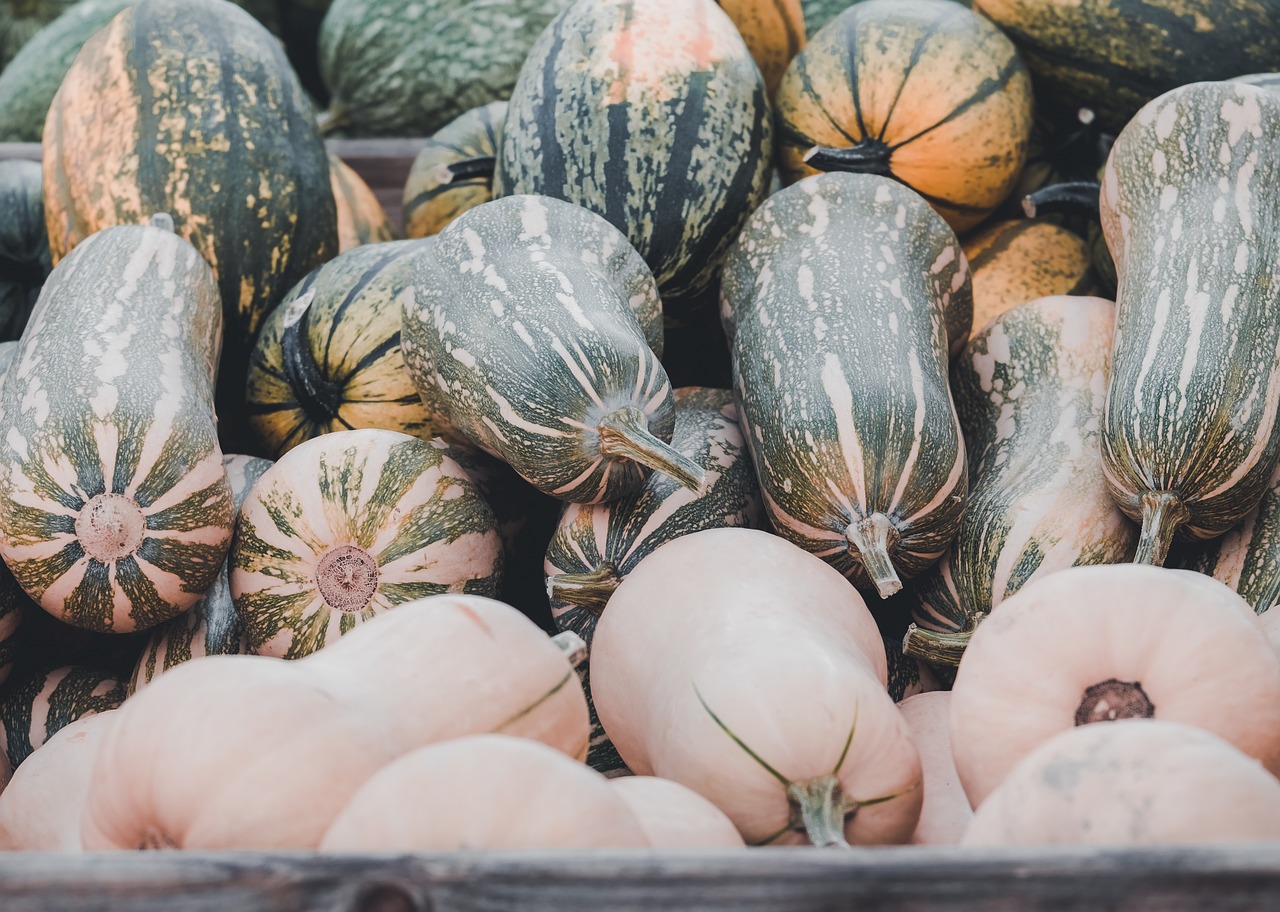
Allergy Management
When it comes to managing allergies in pets, pumpkin can be a game-changer. Many pets suffer from food sensitivities and allergies, often leading to uncomfortable symptoms like itching, digestive upset, and even behavioral changes. The beauty of pumpkin lies in its natural composition. Unlike many commercial pet foods that contain common allergens such as chicken, beef, or grains, pumpkin is typically well-tolerated. This makes it an excellent alternative for pets with sensitive stomachs or allergies to traditional protein sources.
One of the primary reasons pumpkin is so effective in allergy management is its hypoallergenic nature. It’s not just a filler; it provides essential nutrients without the risk of triggering an allergic reaction. For instance, pumpkin is low in protein and fat, which can be beneficial for pets that need to avoid certain ingredients. Moreover, its high fiber content helps to soothe the digestive tract, providing relief from gastrointestinal issues that often accompany food allergies.
If you're considering incorporating pumpkin into your pet's diet for allergy management, it’s essential to start slowly. Introduce it gradually, monitoring your pet for any signs of adverse reactions. Here are a few tips to keep in mind:
- Start with Small Portions: Begin with a teaspoon of pureed pumpkin mixed into their regular food.
- Observe for Reactions: Watch for any changes in behavior or health, such as itching or digestive upset.
- Consult Your Vet: Always discuss dietary changes with your veterinarian, especially if your pet has known allergies.
Additionally, homemade pumpkin treats can be a fantastic way to ensure your pet enjoys the benefits of this nutritious ingredient without the risk of additives that often come with commercial products. You can easily create simple recipes using pure pumpkin puree, oats, and a bit of peanut butter, ensuring that your pet gets a healthy, allergy-friendly treat.
In conclusion, pumpkin is not only a delicious addition to your pet's diet but also a powerful ally in managing allergies. Its natural properties make it a safe choice for pets with sensitivities, promoting overall health and well-being. Just remember, every pet is unique, so it's always wise to tailor their diet to their specific needs and consult with a professional when in doubt.
1. Can all pets eat pumpkin?
Most pets can safely consume pumpkin, but it’s essential to introduce it gradually and consult your veterinarian, especially if your pet has known allergies.
2. What form of pumpkin is best for pets?
Plain, canned pumpkin (not the spiced pie filling) or fresh, cooked pumpkin without any additives is the best choice for pets.
3. How much pumpkin can I give my pet?
Start with a small amount, such as a teaspoon for small pets and a tablespoon for larger ones, and adjust based on their tolerance and dietary needs.
4. Can pumpkin help with my pet's weight management?
Yes! Pumpkin is low in calories and high in fiber, which can help your pet feel full without overeating.
Homemade Pumpkin Recipes
Creating for your furry friend can be a delightful experience, both for you and your pet. Not only does it allow you to control the ingredients, ensuring that your pet gets the best nutrition, but it also adds a personal touch to their meals. Imagine the joy on your pet's face when they taste something made just for them! Here are a few simple recipes that you can whip up in your kitchen using pumpkin.
One of the easiest and most popular recipes is the Pumpkin Puree Treats. All you need is some canned pumpkin (make sure it’s pure pumpkin and not the spiced pie filling), whole wheat flour, and an egg. Simply mix these ingredients together to form a dough, roll it out, and cut it into fun shapes using cookie cutters. Bake at 350°F (175°C) for about 20-25 minutes or until they are firm and golden. Your pet will love these crunchy delights!
Another fantastic recipe is the Pumpkin and Peanut Butter Biscuits. Pets adore peanut butter, and when combined with pumpkin, it creates a treat that’s both tasty and nutritious. To make these, combine 1 cup of pumpkin puree, 1/2 cup of peanut butter, and 2 cups of whole wheat flour. Mix until you achieve a dough-like consistency, roll it out, and cut into desired shapes. Bake them at 350°F (175°C) for 30 minutes. These biscuits not only taste great but are also packed with fiber and protein!
If you’re looking for something a bit different, consider making Pumpkin Dog Food. You can mix cooked ground turkey with pumpkin and some brown rice. This meal is not only filling but also loaded with nutrients. Just make sure to avoid adding any spices or ingredients that could be harmful to your pet. Serve it warm, and watch your pet devour it in seconds!
For those hot summer days, try out a Pumpkin Frozen Treat. Simply blend pumpkin puree with yogurt and freeze it in ice cube trays. Once frozen, you can offer these refreshing treats to your pet. They are a great way to keep your furry friend cool while enjoying the health benefits of pumpkin.
Lastly, if you want to ensure that your pet is getting a balanced meal, you can always create a custom pumpkin meal plan. By mixing pumpkin with various proteins and vegetables, you can cater to your pet's specific dietary needs. Just remember to keep the proportions right and consult your vet if you’re unsure about any ingredients.
In conclusion, incorporating pumpkin into your pet's diet through homemade recipes not only enhances their meals but also allows you to bond with your pet over the joy of cooking. So, roll up your sleeves and start experimenting with these delicious pumpkin recipes!
Q: Can I use fresh pumpkin instead of canned pumpkin?
A: Absolutely! Fresh pumpkin can be cooked and pureed, just ensure it is plain and free from additives.
Q: Are there any pets that should avoid pumpkin?
A: While most pets can enjoy pumpkin, it's best to consult your veterinarian, especially if your pet has specific dietary restrictions.
Q: How much pumpkin can I give my pet?
A: A small amount, typically one to two tablespoons for dogs, is recommended. For cats, a teaspoon is sufficient. Always monitor your pet's reaction.
Consulting Your Veterinarian
When it comes to your pet's health, is crucial, especially when considering changes to their diet. Just like we wouldn't make drastic changes to our eating habits without professional advice, our furry friends deserve the same level of care and attention. Veterinarians are equipped with the knowledge and expertise to guide you on whether incorporating pumpkin into your pet's meals is appropriate based on their individual health needs.
Every pet is unique, and factors such as age, breed, and any pre-existing health conditions play a significant role in determining what foods are suitable. For instance, if your pet has a history of gastrointestinal issues, your vet might recommend a gradual introduction of pumpkin to monitor any reactions. They can help you understand the right quantity to serve, ensuring that your pet reaps the benefits of pumpkin without the risk of overfeeding.
Additionally, if your pet has specific food allergies or sensitivities, your veterinarian can help you identify the best way to incorporate pumpkin safely. They might suggest alternatives or combinations that enhance your pet's diet without compromising their health. Remember, while pumpkin is generally safe and nutritious, it's always better to err on the side of caution.
Moreover, your veterinarian can provide personalized advice on how to prepare pumpkin for your pet. Whether you choose to serve it fresh, cooked, or in a pureed form, your vet can guide you on the best practices to ensure your pet enjoys all the nutritional benefits. They might even provide you with some homemade pumpkin recipes tailored to your pet's specific dietary requirements.
In summary, before diving into the world of pumpkin-infused pet meals, make it a priority to schedule a consultation with your veterinarian. This simple step can help you avoid potential pitfalls and ensure that your beloved pet thrives on their new diet. After all, a healthy pet is a happy pet!
- Can all pets eat pumpkin? - Most pets can enjoy pumpkin, but it's best to consult your vet, especially if your pet has allergies or health issues.
- How much pumpkin can I give my pet? - The amount varies depending on your pet's size and health; your vet can provide specific recommendations.
- Is canned pumpkin safe for pets? - Yes, as long as it's pure pumpkin without added sugars or spices. Always check the label!
- Can pumpkin help with my pet's digestive issues? - Absolutely! The high fiber content in pumpkin can aid digestion and help with both constipation and diarrhea.
Frequently Asked Questions
- Can I give my pet pumpkin every day?
While pumpkin is nutritious and beneficial, it's best to incorporate it into your pet's diet in moderation. A small amount a few times a week can provide health benefits without overwhelming their system. Always consult your veterinarian for personalized advice!
- What types of pumpkin are safe for pets?
Fresh, cooked pumpkin is the best choice for pets. Canned pumpkin (without additives or spices) is also a great option. Avoid pumpkin pie filling or any products with added sugars and spices, as these can be harmful to your furry friends.
- How does pumpkin help with my pet's digestion?
Pumpkin is packed with fiber, which aids in digestion by helping to regulate bowel movements. This can be especially helpful for pets suffering from constipation or diarrhea, making it a natural remedy for digestive issues.
- Can pumpkin help my pet lose weight?
Absolutely! Pumpkin is low in calories but high in fiber, which can help your pet feel full without consuming excess calories. It's a fantastic way to manage weight while still offering a tasty treat!
- Are there any side effects of feeding my pet pumpkin?
Generally, pumpkin is safe for pets, but too much can lead to digestive upset. Start with small amounts and monitor your pet for any adverse reactions. If you notice any unusual behavior, consult your veterinarian.
- Can I use pumpkin as a treat for my pet with allergies?
Yes! Pumpkin is often well-tolerated by pets with food sensitivities. It can serve as a safe and healthy treat alternative, especially for those allergic to common proteins or grains.
- How can I incorporate pumpkin into my pet's meals?
You can mix cooked pumpkin into your pet's regular food, or try making homemade treats! Just ensure that you're keeping portion sizes appropriate to avoid overfeeding while still providing the benefits of this nutritious ingredient.
- Should I consult my vet before adding pumpkin to my pet's diet?
Yes! It's always wise to consult your veterinarian before making any significant changes to your pet's diet. They can provide tailored advice based on your pet's specific health needs and conditions.

